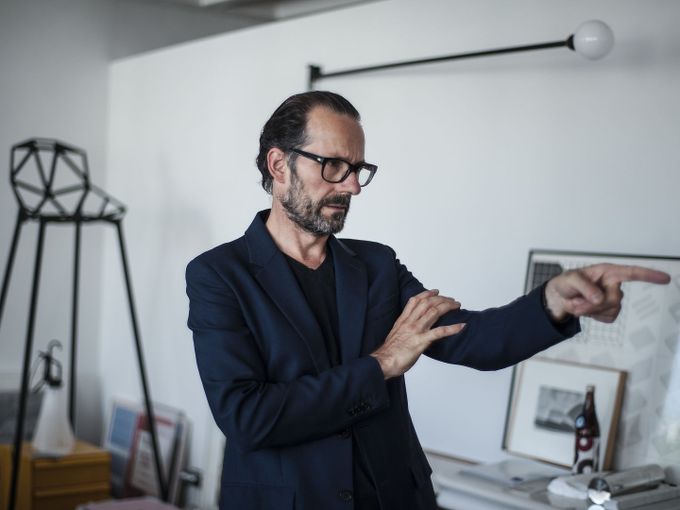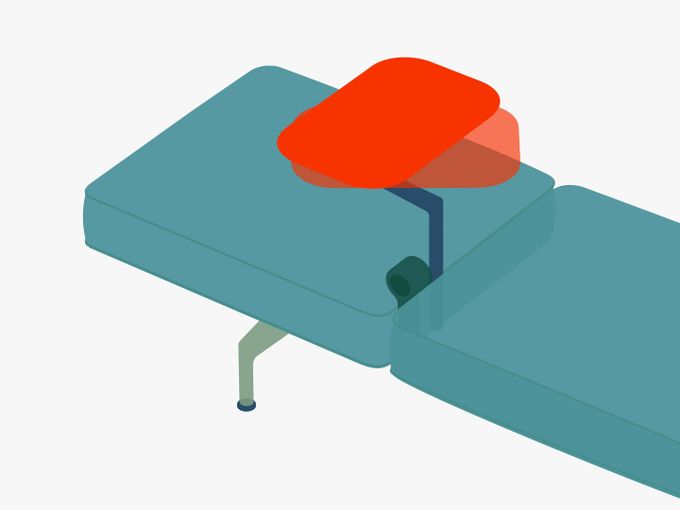ProductsChairsLounge chairsSofasOffice chairsChaises longuesStools & benchesSculpturesConference chairsAirport seatingStorage spaceMicro architectureDining tablesCafé tablesCoffee & side tablesDesksOffice furniture systemsConference systemsLightingClocksDecorative objectsCoat racks & wall shelvesTrays & vesselsNewBestsellerColour & materialAlexander Girard Antonio CitterioBarber OsgerbyCharles & Ray Eames George NelsonHella JongeriusIsamu NoguchiLounge chair finderOffice chair finderGift finderCare & repairSpare partsCare productsManufacturer warrantyVitra Circle StoresMynt: sit differentlyAntony Limited Edition 2025InspirationsLiving roomDining roomHome OfficeChildren's roomOutdoorHome StoriesAugmented RealityColours & materialsHome SelectionWorkspaceFocusMeetingWorkshopClub OfficeCitizen OfficeStudio OfficeDynamic SpacesHospitalityAirportsEducationCo-WorkingHealthcareOur ClientsDestination WorkplaceA case for classicsOffice chairsDancing OfficeHome StoriesThe Home Selection fabrics from Kvadrat and DedarAugmented Reality - bring Vitra products into your homeSchool of Design: Showcase work and knowledgeA case for classicsColour & materialAn open house An office landscape - without walls or partitionsHigh comfort of low energyA leading space for a leading art collegeServicesCare & repairCare productsManufacturer warrantyFAQ and contactInstructionsConsulting & Planning StudioVitra Circle StoresConsulting & planning in the VitraHausInstructionsOutdoor care instructionsRepair, maintenance, overhaul at the Vitra Circle Store Campus ProfessionalsCAD dataProduct factsheetsCertificatesSustainability reportInstructionsEcology informationpConPlanning examplesColour & Material LibraryCertificates and standardsHome SelectionTo the dealer loginOur ClientsMyntDestination Workplace: Visit our clients and partnersAnagram SofaMikadoTyde 2 on castorsACXDancing OfficeOffice chairsMagazineStoriesConversationsExhibitionsDesignerProject VitraA Capsule in TimeSeeing the forest for the treesRefining a classicMynt is a lifetime achievement to meA desk like a typefaceV-FoamSculptural IconsGames bring people together – just like good officesLet there be light!Social SeatingJust Do It!EVER GREENWhy the Eames La Fonda Chair was designedWhen a Sofa is more than just a Sofa: Anagram100% virgin wool – 100% recyclableAn archive is like a time capsuleVitraHaus Loft - A conversation with Sabine MarcelisA 1000 m2 piece of furnitureFrom a toy to an objectThe Eames Collection at the Vitra Design MuseumAbout the partnership between Eames and VitraVitra CampusExhibitionsGuided tours & workshopsFood and drinkShoppingActivities for familiesArchitectureYour eventConsulting & planning in the VitraHausPlan your visitVitra Campus appCampus EventsNewsVitraHausVitra Design MuseumVitra SchaudepotVitra Circle Store CampusOudolf GartenAbout VitraSustainabilityJobs & CareersDesign processThe Original is by VitraHistory - Project Vitra
Citizen, a New Lounge Chair
Three Questions for Konstantin Grcic

Konstantin Grcic created the Citizen lounge chair for Vitra. The chair features an unusual type of construction: its seat is freely suspended from the frame on three steel cables. The designer tells us how it feels to sit in the new chair.
For ‘Citizen’ you have employed a novel design idea: the seat is suspended from three points. Was this concept inspired by any specific models?
Yes, there was one particular source of inspiration: the Hardoy Chair, also known as the Butterfly Chair. This design from the 1940s has a very simple construction: a seat in the form of a canvas or leather sack is suspended at four points on a lightweight, curved metal frame. The seat is stretched between the frame. For the Citizen chair, however, we modified the original idea considerably during the development process: three steel cables are used to suspend the seat from the supporting structure, while the backrest is fixed to the frame. Incidentally, the steel cables are stronger than is actually necessary to support a person’s weight. The thickness gives the cables a certain strength and spring tension, which enables us to define and control the movement of the seat. The seat should not move in an unchecked fashion – it shouldn’t ‘float’.How does it feel to sit on Citizen?
A project like Citizen is not about innovation or reinvention, but sometimes you end up discovering something novel. The simple suspension creates a brand new way of sitting. The motion is free, yet soft and subtle. There’s almost something meditative about it. A bit like instinctively adjusting your sitting position on a soft cushion. I find that very pleasant and appealing. Interestingly, the movement is clearly visible from the outside, but not so noticeably perceived by the sitter. In any case, sitting in Citizen is nothing like being in a rocking chair or an office chair with a synchronised mechanism.
What does Citizen have in common with the other lounge chairs in the Vitra collection, such as the legendary Eames Lounge Chair or the Grand Repos by Antonio Citterio? What makes them different?
What they have in common is that they make it possible to lounge. Lounging is a relaxed, rested posture that still allows movement. In a lounge chair, you can read, talk on the phone or even work. This chair typology includes a low seat height and a swivel base. What distinguishes the three? The Lounge Chair by Charles and Ray Eames is the quintessential lounge chair, an icon. It represented a completely new typology at the time, and all designs are still measured against it to this day. Grand Repos, on the other hand, brings a technology from the world of office furniture into the home with its synchronised mechanism. Fully upholstered and possessing a certain weight, it has a rather conservative aesthetic. The Eames Lounge Chair also has a classic appearance with its leather upholstery and wooden shells. Citizen breaks with the traditional image of the lounge chair. It is lighter in look and has a more open construction, which expresses a completely different dynamic.

Publication date: 24.7.20
Author: Jasmin Jouhar
Images: Florian Böhm, Markus Jans


